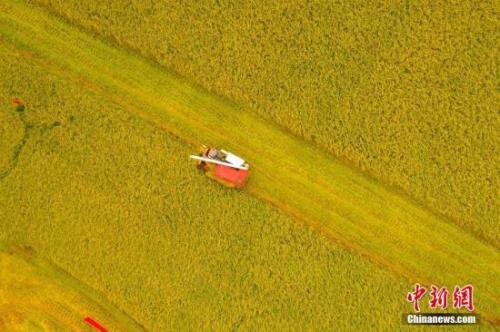By 2020, China plans to launch more than 300 comprehensive land consolidation pilots
Lei Wang, deputy director of the Department of Land and Space Ecological Restoration of the Ministry of Natural Resources of China, said at the 2019 National Poverty Alleviation Series Forum held in Beijing on the 14th that China is studying and formulating a comprehensive land consolidation policy. Pilots in 300 comprehensive land consolidation projects.
At the Poverty Alleviation Land Policy Forum held on the same day, Lei Wang pointed out that mainly through measures such as optimizing the layout of permanent basic farmland, encouraging the reuse of idle and inefficient construction land in rural areas, and supporting the retreat of construction land for the integrated development of rural primary, secondary, and tertiary industries, Support poverty-stricken areas to give priority to comprehensive land improvement.
Since the 18th National Congress of the Communist Party of China, the central government has allocated about 111.5 billion yuan (RMB, the same below) for high-standard farmland construction subsidies, including about 104.9 billion yuan in targeted poverty alleviation funds, and arranged subsidy funds in three regions and three states in deep poverty areas About 21.3 billion yuan. At the same time, major production improvement projects have been implemented in Gansu, Shaanxi, Sichuan, Jiangxi, Yunnan, Guizhou, Guangxi, and Xinjiang Production and Construction Corps, which are relatively concentrated in poor areas. Through land improvement, the rural appearance and agricultural production conditions in poor areas have been greatly improved.
At the same time, rural land improvement can effectively increase the area of arable land and improve the quality of arable land, and provide the possibility for inter-provincial transactions in terms of increase and decrease linked savings indicators and supplementary arable land indicators.
From the trials in the county at the beginning, to the transfer within the province to promote poverty alleviation, and the cross-provincial transfer to implement the poverty reduction cooperation between the east and the west, Xue Ping, the second inspector of the Land and Space Use Control Department of the Ministry of Natural Resources, pointed out that China ’s urban and rural construction land increased. The pegging-reduction policy has been expanded three times in succession, opening up new sources of funding for poverty alleviation in addition to state financial transfer payments.
The link between the increase and decrease of urban and rural construction land is based on the overall planning of land use. The rural construction land is reclaimed into cultivated land and other agricultural land (that is, demolished). The resulting construction land indicators are used for urban and rural construction (that is, new construction). Optimize the layout of urban and rural construction land on the basis of the area balance of old and new land.
In March 2018, the General Office of the State Council issued the “Measures for the Administration of Inter-provincial Adjustments on the Inter-provincial Adjustments of Linked Savings Indicators for the Increase and Decrease of Construction Land in Urban and Rural Areas”, which clarified the state ’s unified allocation of adjustment tasks, unified determination of the adjustment price standards, unified collection and expenditure of funds, and realised the adjustment funds of the eastern and western regions. Overall balance. Xue Ping said that in view of the goal of achieving poverty alleviation in 2020, the transfer task was divided into two years, 2018 and 2019, with an average annual cost of 60 billion yuan. At present, the transfer task in 2018 has been successfully completed, and the task has been issued in 2019, and various regions are stepping up efforts.

Original link: http://www.chinanews.com/cj/2019/10-14/8978839.shtml

